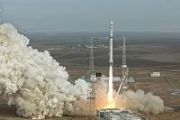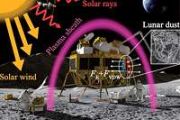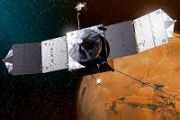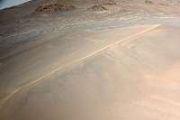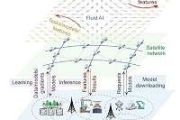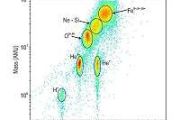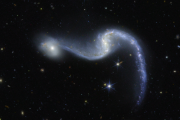
Copernical Team
Watch live: Sentinel-1C pre-launch media briefing
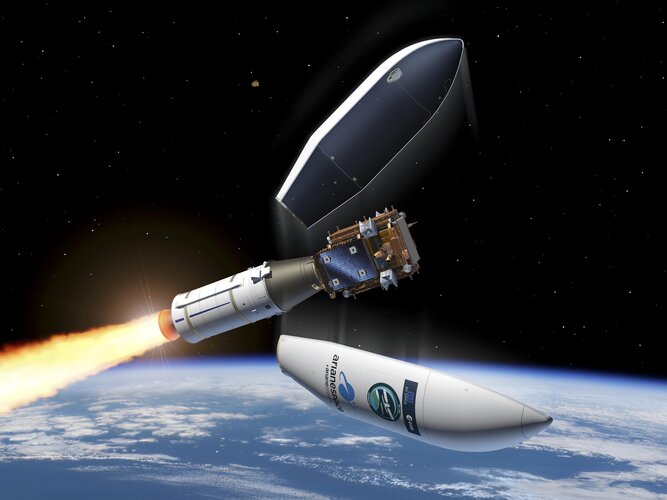
Watch live: Sentinel-1C pre-launch media briefing
Follow the media briefing today at 15:00 CET on ESA Web TV
3D-printing advance mitigates three defects simultaneously for failure-free metal parts
 University of Wisconsin-Madison engineers have found a way to simultaneously mitigate three types of defects in parts produced using a prominent additive manufacturing technique called laser powder bed fusion.
Led by Lianyi Chen, an associate professor of mechanical engineering at UW-Madison, the team discovered the mechanisms and identified the processing conditions that can lead to this
University of Wisconsin-Madison engineers have found a way to simultaneously mitigate three types of defects in parts produced using a prominent additive manufacturing technique called laser powder bed fusion.
Led by Lianyi Chen, an associate professor of mechanical engineering at UW-Madison, the team discovered the mechanisms and identified the processing conditions that can lead to this Spire Global partners with LatConnect60 to enhance data-driven agriculture practices
 Spire Global (NYSE: SPIR), a leading provider of space-based data and analytics, has been selected by LatConnect60, a data and analytics company specializing in Earth Observation, to deliver Global Navigation Satellite System Reflectometry (GNSS-R) data and Soil Moisture Insights. These tools aim to improve sustainable agriculture practices through precise environmental monitoring.
The Wor
Spire Global (NYSE: SPIR), a leading provider of space-based data and analytics, has been selected by LatConnect60, a data and analytics company specializing in Earth Observation, to deliver Global Navigation Satellite System Reflectometry (GNSS-R) data and Soil Moisture Insights. These tools aim to improve sustainable agriculture practices through precise environmental monitoring.
The Wor NASA partners advance projects for LEO space economy
 NASA and its commercial partners are achieving significant milestones in the advancement of low Earth orbit (LEO) projects. These accomplishments are driving innovation in human spaceflight and enhancing commercial capabilities, with progress ranging from safety advancements to technological developments.
"Our commercial partners' growing capabilities in low Earth orbit underscore NASA's c
NASA and its commercial partners are achieving significant milestones in the advancement of low Earth orbit (LEO) projects. These accomplishments are driving innovation in human spaceflight and enhancing commercial capabilities, with progress ranging from safety advancements to technological developments.
"Our commercial partners' growing capabilities in low Earth orbit underscore NASA's c China launches new mapping satellites to enhance radar imaging network
 China successfully launched two new satellites aboard a Long March-2C rocket early Monday morning, bolstering its satellite imaging capabilities.
The launch occurred at 7:39 a.m. Beijing Time from the Jiuquan Satellite Launch Center in northwest China. The mission placed the Siwei Gaojing-2 03 and Siwei Gaojing-2 04 satellites into their designated orbits, marking the 547th mission in the
China successfully launched two new satellites aboard a Long March-2C rocket early Monday morning, bolstering its satellite imaging capabilities.
The launch occurred at 7:39 a.m. Beijing Time from the Jiuquan Satellite Launch Center in northwest China. The mission placed the Siwei Gaojing-2 03 and Siwei Gaojing-2 04 satellites into their designated orbits, marking the 547th mission in the NASA Voyager 1 returns to full operations after communication issue
 NASA's Voyager 1 spacecraft has successfully resumed normal operations following a communication disruption last month. The issue arose when the spacecraft unexpectedly switched from its primary X-band radio transmitter to a weaker S-band transmitter, a change that temporarily halted the transfer of science and engineering data. The distance of Voyager 1 - approximately 15.4 billion miles (24.9
NASA's Voyager 1 spacecraft has successfully resumed normal operations following a communication disruption last month. The issue arose when the spacecraft unexpectedly switched from its primary X-band radio transmitter to a weaker S-band transmitter, a change that temporarily halted the transfer of science and engineering data. The distance of Voyager 1 - approximately 15.4 billion miles (24.9 Six science experiments launched from Sweden onboard SubOrbital Express 4
 A key moment in space science unfolded Tuesday as six cutting-edge experiments launched aboard SubOrbital Express-4 from SSC's Esrange Space Center in northern Sweden. The rocket, carrying international contributions from six countries, achieved six minutes of microgravity, advancing research in medicine, green energy, and cosmic origins.
SubOrbital Express-4 reached an altitude of 256 kil
A key moment in space science unfolded Tuesday as six cutting-edge experiments launched aboard SubOrbital Express-4 from SSC's Esrange Space Center in northern Sweden. The rocket, carrying international contributions from six countries, achieved six minutes of microgravity, advancing research in medicine, green energy, and cosmic origins.
SubOrbital Express-4 reached an altitude of 256 kil Magnetic tornado is stirring up the haze at Jupiter's poles
 While Jupiter's Great Red Spot has been a constant feature of the planet for centuries, University of California, Berkeley, astronomers have discovered equally large spots at the planet's north and south poles that appear and disappear seemingly at random.
The Earth-size ovals, which are visible only at ultraviolet wavelengths, are embedded in layers of stratospheric haze that cap the plan
While Jupiter's Great Red Spot has been a constant feature of the planet for centuries, University of California, Berkeley, astronomers have discovered equally large spots at the planet's north and south poles that appear and disappear seemingly at random.
The Earth-size ovals, which are visible only at ultraviolet wavelengths, are embedded in layers of stratospheric haze that cap the plan Webb traces swirling spiral arms in infrared
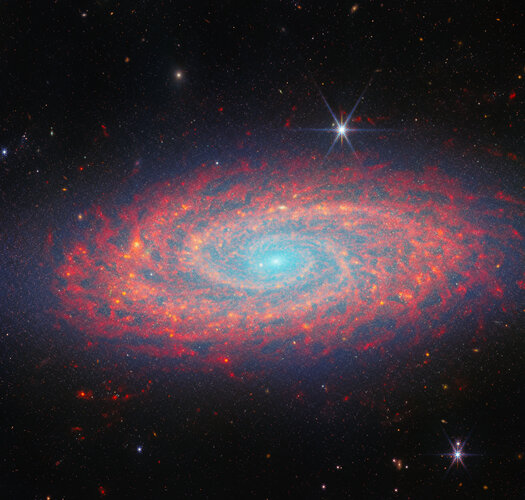 Image:
Webb traces spiral arms in infrared
Image:
Webb traces spiral arms in infrared European science takes express ride into space

The SubOrbital Express-4 sounding rocket was successfully launched from the Esrange Space Center outside Kiruna, in the north of Sweden, at 06:00 CET yesterday morning.





